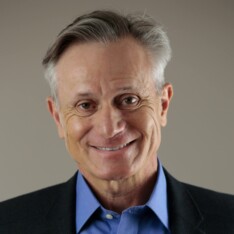Coase and Covid: The Individualized Option

The Nobel-laureate economist Ronald Coase was a font of pioneering ideas. Among the best are those that emerge from his recognition that any and all effects that one person’s actions have on the welfare of another person are caused by both persons. And so in the language of economics, all externalities are bilateral.
As explained in our previous essay, this reality doesn’t mean that each party is to blame for causing ill consequences. The word “blame” implies wrongdoing. And wrongdoing is committed only when someone violates his or her duty, or interferes with other people’s rights, including their property rights.
Returning to an example from our previous essay, because tenants in the apartment building where you live have the right to be free of noise at night, if your neighbor Tom practices his tuba at midnight, he is blamed for keeping you awake. We say that the party “causing” the harm is Tom. Laying the blame for the harm on Tom and describing him as its cause is correct despite the fact that, in a physical sense, you suffer that harm because you choose to live in that apartment. You could avoid the harm by moving or by installing expensive soundproofing on your walls and ceilings.
Yet because the person who can prevent this harm at the lowest cost is not you, but Tom, we identify Tom as its “cause.” Responsibility for preventing the harm thus falls on him rather than on you. The general lesson is that we want to deal with problems that arise from human interaction in ways that are least costly.
The Huge Cost of Obstructing Society
And we humans do a lot of interacting. Our flourishing is made possible only by our interacting commercially, socially, and intimately. And the more we peacefully interact, the more we flourish. This fact explains why cities in commercial societies are more dynamic, popular, and prosperous than are rural hamlets. But just as increased interaction creates more opportunities for mutual gain, it also raises the risk of us inadvertently harming each other, sometimes even tragically.
The risk of such inadvertent harm could be completely eliminated by each of us becoming a hermit – living in isolation, interacting at most only with members of our immediate families. What economists call “negative externalities” – strangers inadvertently harming each other as they interact – would disappear! Of course, we all would also, as a result of such isolation, be made unimaginably poor. And many of the few of us who manage to cling to life would likely prefer to be dead, given the absence of friends and other people with whom to interact.
Such an existence is unnatural for humans. Our natural sociability – which includes what Adam Smith called our “propensity to truck, barter, and exchange” – incessantly brings us together for pleasure and for profit. When this interaction is stymied, we all suffer losses.
The way we deal with the ever-present risks of inadvertently harming each other as we interact is to assign blame – and often legal liability – to the persons who can at the lowest cost prevent inadvertent harms. Despite the fact that we could completely eliminate such risks by prohibiting all interaction, we don’t come close to taking such an extreme measure. Doing so would be far too costly.
Yet an implicit assumption behind 2020’s shelter-in-place commands and other nonpharmaceutical interventions (NPIs) is that they are the most cost-effective means of preventing the harm posed by the coronavirus. But a policy that grinds to a halt wide swathes of the economy and obstructs complex and nuanced patterns of social interaction is highly unlikely to be a cost-effective means of preventing harm from the coronavirus. From a cost-benefit perspective, this policy is the equivalent of solving the noise problem in your apartment building by forcibly evacuating all residents except tuba-playing Tom.
The Individualized Option
There’s another way, one not taken or, it seems, even considered. This better way – this more cost-effective approach – is to allow each individual to choose his or her own manner and extent of protection from the virus. We call it the individualized option.
Consider an admittedly extreme possibility, but one that would provide to any individual who chooses it complete protection: wearing a hazmat suit when venturing into the company of other people. The wearer would be practically guaranteed never to become infected with the coronavirus.
Sounds impractical, extreme, and crazy, right? But is this option more impractical than bringing much of society to a screeching stop for an indefinite time? Is this option more extreme than granting to governments virtually unlimited police-state powers to suppress ordinary human engagements?
Is obliging the most fearful and susceptible among us to take their own precautions, including (if they wish) wearing a hazmat suit, crazier than preventing adults from going to work, children from going to school, and everyone from socializing in familiar ways?
Would a world in which some people stroll the streets wearing hazmat suits be more lunatic than a world in which Times Square is empty, sporting events are played in vacant arenas, kindergartners attend school online, and some governments recommend the wearing of masks during sex?
What about cost? IndustrialSafety.com sells hazmat suits for $200. Thus, supplying every man, woman, and child in America with a hazmat suit would cost just under $70 billion. Heck, let’s supply each American with two such suits, in case one breaks. $140 billion. This amount is less than ten percent of what the U.S. government alone directly spent through July in response to covid. And this $140 billion shrinks further into insignificance when we add in the costs of lost economic output, of lost social engagement, and of the lives of cancer patients and others lost because of the lockdowns.
Our point is not to recommend that everyone go to the extreme of donning a hazmat suit. It is instead to explain that government-orchestrated restrictions on social interaction are not the only or even the least costly means available for protecting people from the coronavirus. Each of us can protect ourselves individually, and at a cost that’s affordable.
The individualized option allows each individual to adjust his or her level of protection according to his or her personal risk preferences. People who are extremely averse to risk might choose to actually wear hazmat suits. Most people, however, would choose lesser degrees of protection – for example, wearing N95 masks and latex gloves, or voluntarily sheltering in place. People less risk-averse would choose lesser degrees of protection. Some individuals – those who judge the risk of being harmed by covid to be negligible – would be free to take no precautions at all.
Importantly, under the individualized option each person bears the costs and benefits of his or her decisions, and so is not blameworthy of inflicting harm on others. Because you can, at affordable cost, choose for yourself whatever degree of protection you desire, no one else must be conscripted to behave in ways that reduce your risk of becoming infected. Each of us would enjoy the benefits, and incur the costs, of whatever individualized level of protection we personally choose. None of us could then legitimately be said to impose costs on others. The overall costs of dealing with the virus would thus be minimized.
The case, in short, for government-orchestrated NPIs is simply invalid.
Other Considerations
Why was Coase ignored and the individualized option never considered? And why will so many people continue to reject it? We can only speculate on answers. In our next essay, we’ll offer some relevant speculations as we complete our case for the individualized option.











